Lorenzo Protocol aims to create an institutional-grade on-chain asset management platform that integrates traditional financial yield strategies into DeFi scenarios by building a universal financial abstraction layer. It aspires to become the "BlackRock + Goldman Sachs" of Web3, providing diversified and sustainable real yields for on-chain assets.
On April 18, 2025, the exclusive TGE event for Lorenzo Protocol launched on Binance Wallet, sparking heated discussions within the community.
The focus of the conversation centers on the strong performance of this TGE: under the stricter participation requirement of "having purchased Alpha tokens on Binance in the last 30 days," Lorenzo still achieved an impressive oversubscription of 183.29 times;
On the other hand, many people's first impression of Lorenzo likely stems from its outstanding achievements in the BTCFi space: as a liquidity financial layer for Bitcoin, Lorenzo currently integrates over 20 blockchains and 30 DeFi protocols, providing yield services for more than $600 million in Bitcoin. Many have also noted that Lorenzo chose "BANK" as the token name.
BANK - Bank, which contains infinite imagination:
With the clear trend of crypto regulation, institutional confidence in crypto assets is gradually increasing. The year 2025 is seen as a key year for the explosion of on-chain finance, and as more and more funds settle on-chain, there is a huge demand for "asset yield." In this opportunity:
How can we simplify participation thresholds to better accommodate users and funds?
How can we return from speculation to long-term value, and build a truly real yield-centered asset yield pathway?
Does Lorenzo's BANK hint at the project's next phase of layout?
The parties involved are not keeping secrets; with Lorenzo announcing a brand upgrade, a new chapter of development centered on "an institutional-grade on-chain asset management platform" is unfolding:
Focusing on building a "Financial Abstraction Layer," it merges asset management and investment banking services. On one hand, it focuses on the tokenization of CeFi financial products and integrates them with DeFi scenarios, providing modular yield products that are composable, verifiable, and one-click integrated for those looking to issue financial projects. On the other hand, through yield products, it offers users safe, low-threshold, and diverse asset yield options, further constructing a new type of on-chain financial network centered on real yields.
From BTCFi to the Web3 version of "BlackRock + Goldman Sachs," how is this specifically achieved? Let's take a closer look.
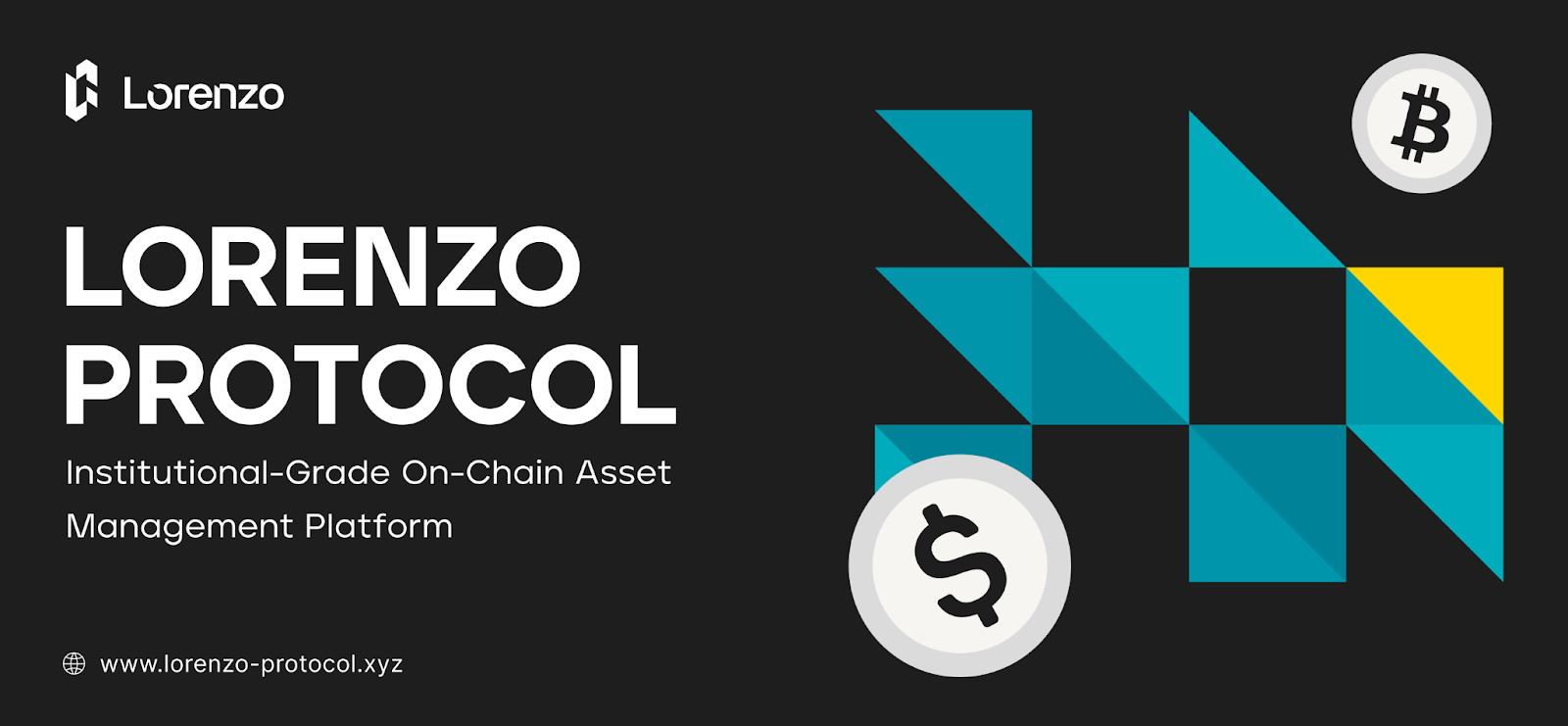
Funds are on-chain, but yield infrastructure lags behind
We can feel the trend of funds moving on-chain from many aspects:
According to CoinGecko data, as of April 25, 2025, the total market capitalization of the RWA market reached $38.3 billion, an increase of over 100% compared to $19 billion at the end of 2024.
According to Artemis data, as of April 2025, the total market capitalization of stablecoins reached $231.6 billion, a significant increase of 51% compared to $152.6 billion in the same period of 2024.
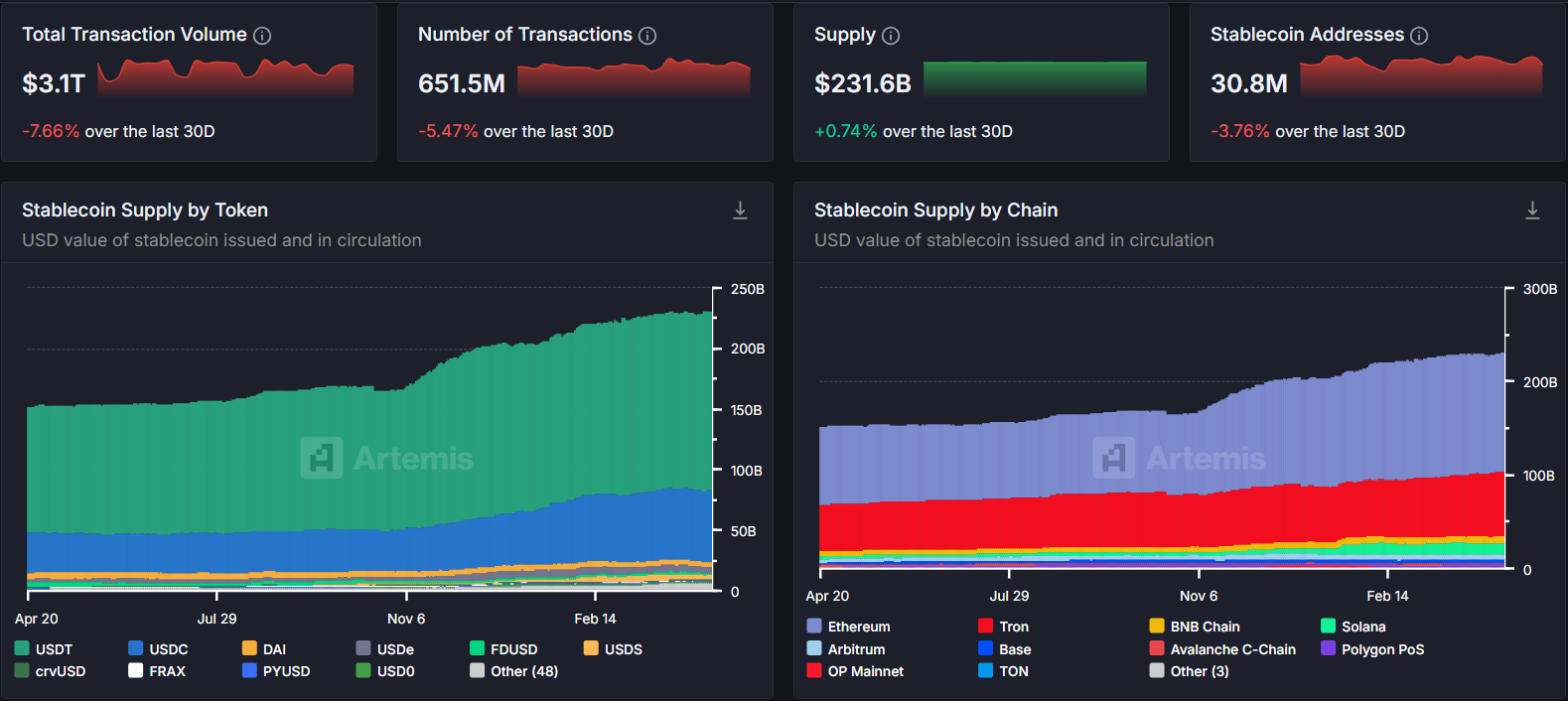
Coinbase's latest survey also illustrates the issue: in a survey of 352 institutional decision-makers, 83% of respondents plan to expand their cryptocurrency allocations this year, and 59% plan to allocate more than 5% of their asset management scale to crypto assets in 2025.
Behind this trend, on one hand, is the decentralization, transparency, and efficient capital flow advantages that blockchain technology brings to on-chain finance. On the other hand, it is also due to the clear, open, and inclusive global crypto regulatory policies led by the Trump administration in the U.S., which have cleared compliance barriers for institutional participation.
More active institutional participation is accompanied by a broader influx of users, driving the rapid development of financial entry products such as wallets, Neobanks, and card-issuing institutions.
But, funds are on-chain, and then what?
Yield is what most attracts users, which will inevitably bring huge growth opportunities for Lorenzo as an on-chain asset management platform.
However, simply having assets sitting in wallets does not generate yield on their own. Faced with a broader user base and larger funds, how to build a more complete yield infrastructure has become a new challenge in the current situation:
As a core pillar of the crypto industry, DeFi has advantages such as transparency, permissionless access, and fair participation. However, the complexity of blockchain brings a higher participation threshold for DeFi, and the scale of funds, liquidity depth, and market maturity in DeFi cannot compare with CeFi. More importantly, in a market filled with speculation like DeFi, most of its returns currently rely on short-term incentives, which cannot better meet the real yield needs of most users.
Traditional finance has long been criticized for trust issues stemming from opaque fund management and "black box" asset operations, but it possesses core advantages such as a high liquidity environment, more mature trading tools, and richer yield strategies. Bringing these advantages on-chain faces significant technical challenges.
How to combine the advantages of both to provide a transparent, fair, low-threshold, and rich yield experience for on-chain assets?
By building a universal financial abstraction layer, Lorenzo is constructing a bridge connecting traditional financial products with DeFi, promoting the implementation of more complex yield strategy plays and financial scenarios.
Left hand funds, right hand strategies: How does Lorenzo build an on-chain "investment bank"?
How can we quickly understand in one sentence how Lorenzo builds a "real yield-based institutional-grade on-chain asset management platform"?
In short, we can view Lorenzo as a modular financial issuance platform that follows the operational principle of "on-chain fundraising, off-chain execution, on-chain settlement":
If you want to package your yield strategy into a yield product and release it to attract more funds and expand asset management scale, Lorenzo provides a one-click solution:
Lorenzo supports seamless integration of any yield strategy, including traditional financial yield strategies from CeFi and TradFi, whether it is BTC staking, stablecoin arbitrage, RWA yield custody, or fixed income, principal protection, dynamic leverage products, etc. This comprehensive coverage of different yield strategies ensures that users have ample choices under different risk preferences and yield expectations.
It is worth noting that as one of the most representative financial asset tokenization projects in DeFi, Ethena currently focuses solely on the packaging of one financial asset, USDe, and its market capitalization has reached $485 million. Lorenzo supports the tokenization of various financial products and the implementation of combination scenarios, bringing truly modular and diversified yield infrastructure to on-chain finance, which presents exponential growth potential for its future.
More importantly, many people are deterred by the high barriers to publishing operations, but Lorenzo's universal financial abstraction layer simplifies everything: when you want to release a yield product, you do not need to worry too much about implementation challenges. By calling Lorenzo's Vault API, the yield strategy will be packaged into standardized yield components.
Modularity and composability are another major advantage of Lorenzo: as yield components, each Vault represents the tokenization of a yield strategy, forming a single strategy pool, while different Vaults can be freely combined. By aggregating multiple Vaults, a combination strategy pool can be constructed, dynamically adjusted by individuals, institutions, or AI as Portfolio Managers to achieve more advanced yield strategies in a responsible market.
Based on the advantage of composability, Lorenzo will also provide customized yield design, secure custody mechanisms, and product feature combinations for yield strategy issuers, especially institutional users, to meet the yield management needs of different institutional scenarios.
If you want to integrate yield products for your project to provide users with better yield services, Lorenzo can also accomplish this with one click:
Once the yield strategy is packaged into a Vault, it will then issue an On-Chain Traded Fund (OTF), which can be understood as a strategy fund similar to an ETF, thus achieving the tokenization of financial yield strategies. As a modular standard, OTF can be easily integrated into upper-layer applications such as wallets, PayFi, and RWA by calling Lorenzo's Vault API.
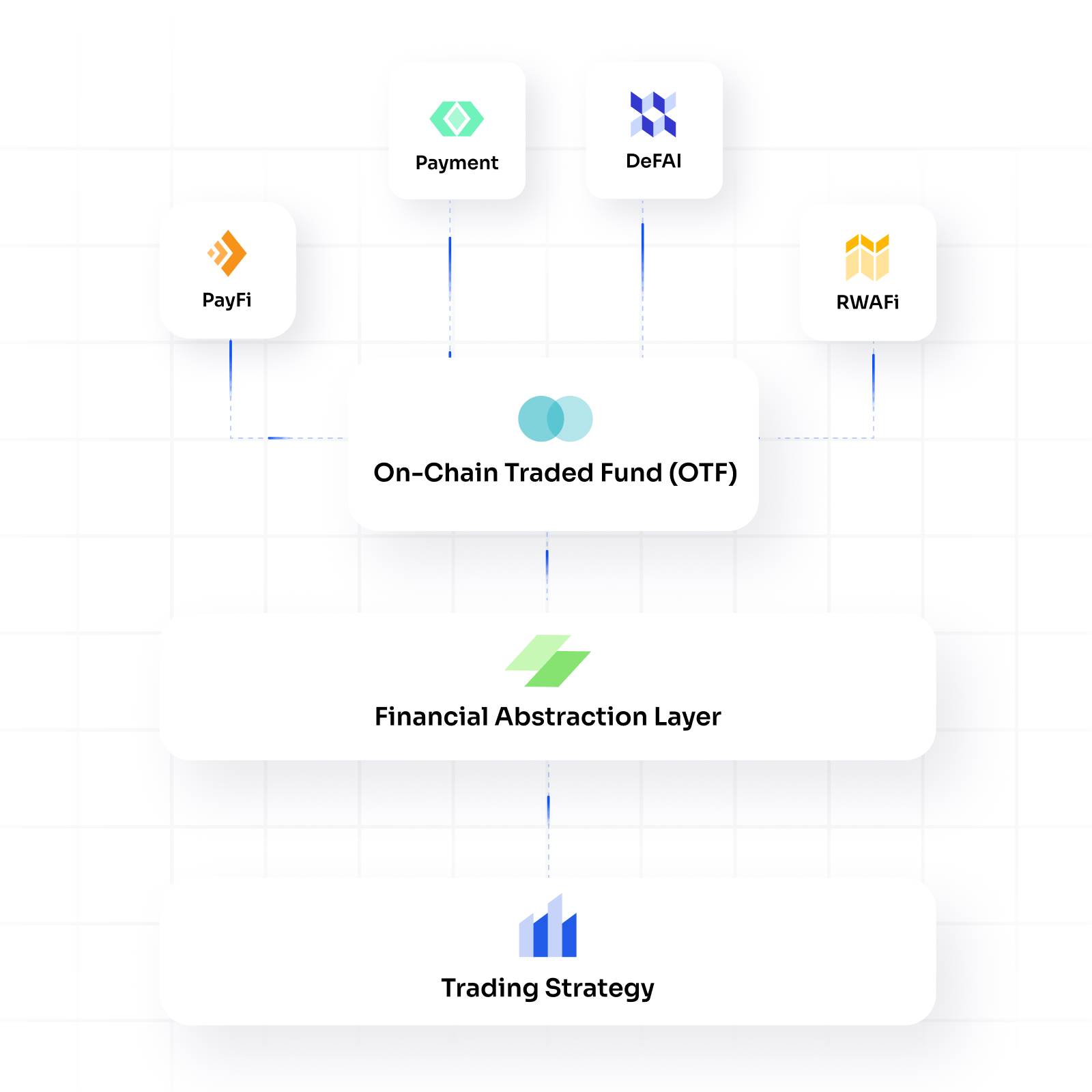
If you want to earn yield from your assets, Lorenzo offers a variety of yield products for you to choose from.
When the yield product is released, a market based on yield strategies is established: users can choose the Vault that meets their needs and provide funds for it to receive a share of the Vault's yield.
Once the Vault raises funds, it will execute the yield strategy to generate returns, and the distribution of yields will be executed on-chain through smart contracts, which not only simplifies the yield distribution process but also ensures the transparency and verifiability of the Vault, further enhancing trust.
At the same time, Lorenzo will also use $BANK as a core incentive mechanism to further activate the participation enthusiasm of the entire ecosystem, thereby building a sustainable long-term value mechanism:
As the native token, the total supply of $BANK is 2.1 billion, with governance decision-making, smart savings vault yields, dividends, and other utilities.
The income of the Lorenzo protocol mainly comes from strategy aggregation, cross-chain bridge services, and ecological cooperation sharing, and is continuously used to repurchase $BANK, thereby establishing a value support logic directly linked to protocol growth. The token repurchase plan is not only a way for the platform to give back to users but also a strong endorsement of Lorenzo's ecological value. This initiative will effectively enhance the market liquidity and value of the BANK token, while also injecting more confidence and momentum into Lorenzo's ecosystem.
In addition, Lorenzo will introduce the veBANK model, deeply binding tokens with protocol governance, ecological incentives, a ranking system, and task mechanisms, further enhancing user stickiness and long-term participation motivation. A series of initiatives aim to attract and empower users who wish to appreciate their assets, continuously driving the sustainable expansion of the ecosystem.
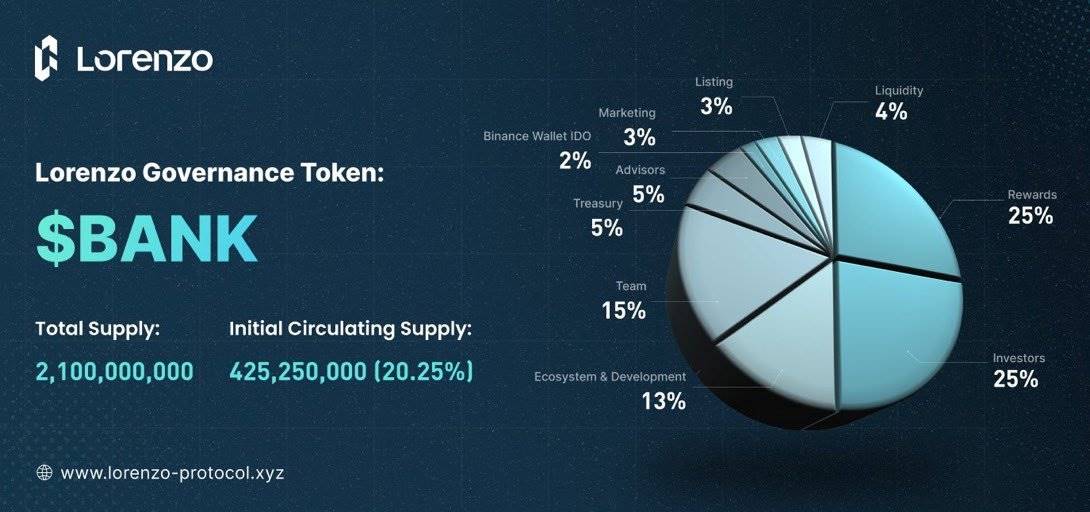
Whether it is the strategy issuers or the fund providers, both will meet their yield needs through Lorenzo:
For institutions/projects:
They can choose to issue yield products to attract more funds and users; they can also choose to directly integrate yield products to empower users; or they can invest the large-scale funds they manage into yield products to achieve better risk and yield management.
For ordinary users:
No complex operations are required; users only need to purchase OTF to indirectly participate in the related custody strategy pool, achieving sustainable and verifiable stable yields based on real returns on-chain.
In addition, based on the $BANK token to build effective ecological incentives, Lorenzo will further stand together with various participants in the ecosystem. Community users who actively participate in tasks, promotions, staking, and other activities will also receive airdrop incentives and long-term rights, sharing the dividends of ecological development and jointly promoting project growth.
In this way, Lorenzo plays an important role as an "on-chain investment bank": By providing tokenization services for financial assets, modular yield infrastructure, and a complete set of tools for designing, packaging, and deploying yield products, it transforms off-chain financial logic into composable, verifiable, and sustainable on-chain capabilities, achieving efficient matching of yield strategies and funds. Through continuous ecological construction, it further endows Lorenzo with the infinite potential for exponential growth in the future.
From Payment, PayFi, RWAFi to DeFAI: Accelerating the integration of DeFi, CeFi, and TradFi
Before discussing ecological construction, we first need to clarify the participants in the ecosystem.
Of course, users are the top priority, and the narrative of asset yield that Lorenzo focuses on can be said to be the core demand of most on-chain users. More importantly, unlike other DeFi projects, Lorenzo aggregates on-chain and off-chain yield strategies and tokenizes them, making participation simple and truly achieving long-term sustainable real yields, which is more appealing to users.
By sorting out the participants in Lorenzo's ecosystem around "how to provide better services for users," from DeFi, CeFi to TradFi, we will discover a higher development ceiling under Lorenzo's "on-chain investment bank" narrative.
Who will become the yield strategy issuers in the Lorenzo ecosystem?
With the goal of productizing strategy capabilities and further expanding the scale of managed assets, the issuance of Lorenzo's yield products will attract significant attention from quantitative funds, RWAFi platforms, CEXs, DeFi protocols, and LP strategy providers.
Who will be interested in integrating Lorenzo's yield products?
Whether it is wallets, payment platforms, RWAFi project parties, or card organizations, as long as their product functions involve assets, their users will have asset yield demands. Lorenzo's low-threshold, efficient, and secure "embedded yield product" solutions will be attractive.
Who will become the fund providers for Lorenzo's yield products?
Undoubtedly, in addition to retail investors with yield demands, institutions holding large amounts of user funds and seeking more efficient and secure fund custody, appreciation, and yield distribution methods will become the main force, including Neobank digital banks, wallets, card issuers, PayFi products, CEX & trading platform yield accounts, and DeFi, among others.
It can be said that this is a comprehensive ecosystem that can support the healthy and sustainable development of DeFi, CeFi, and TradFi, laying a solid foundation for the rapid expansion of Lorenzo's ecosystem.
Taking the RWAFi project as an example, although RWA has become one of the fastest-growing tracks in 2025, it also faces the problem of insufficient attractiveness due to a low annualized yield of 3-5%. By collaborating with Lorenzo, RWA Tokens can be staked through the Vault provided by Lorenzo, using CDP, CEX, or Prime Brokerage to extract stablecoins, and then deploying them into yield strategies, easily doubling the overall yield.
On May 9, 2025, Lorenzo announced a strategic partnership with the leading RWA project Plume. The two parties will collaborate around core assets such as BTC and stablecoins to jointly promote their application in RWA scenarios and explore more sustainable on-chain yield paths. Plume has currently attracted over 180 projects, laying a solid foundation for product integration and ecological cooperation with Lorenzo.
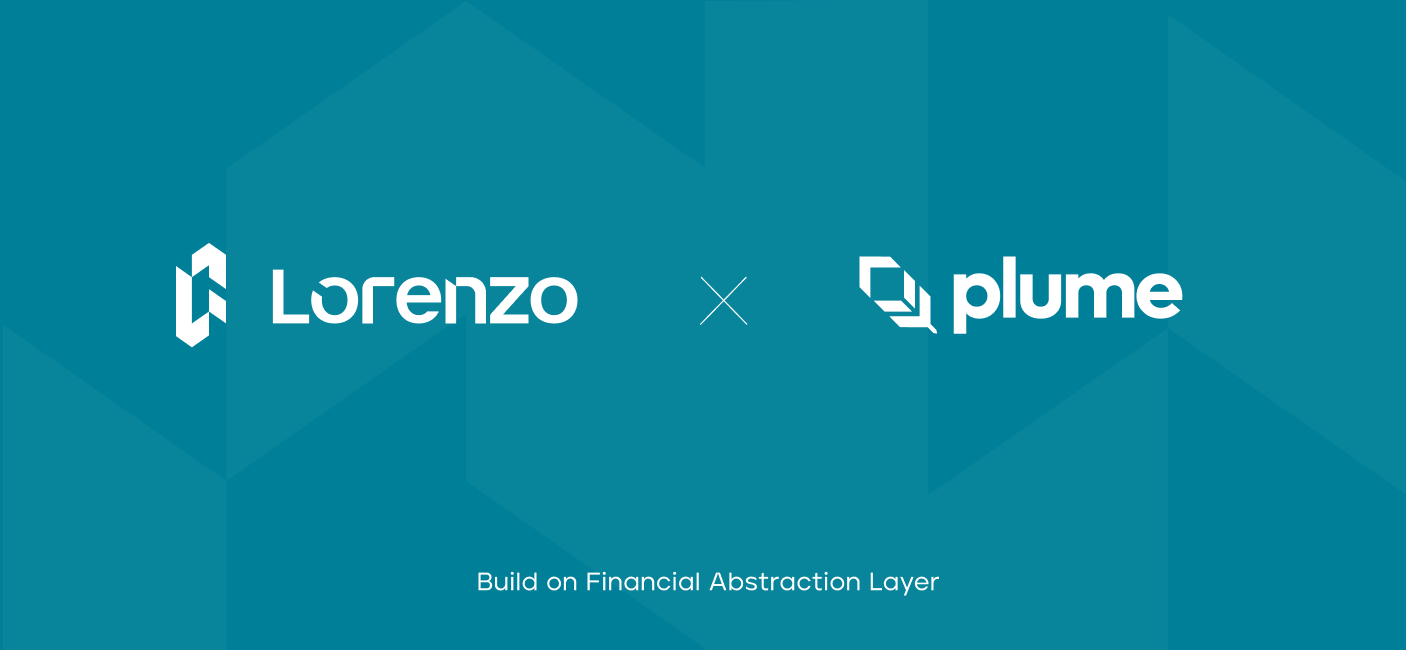
The same goes for PayFi projects. Currently, most PayFi projects, such as credit card platforms, wallets, or payment applications, typically require users to stake BTC or stablecoins as reserves. Lorenzo can deposit these underutilized "idle assets" into the Vault, deploy them into yield strategies, helping platforms improve asset utilization, reduce operating costs, and even return part of the yield to users.
Previously, Lorenzo also collaborated with the stablecoin digital bank Infini to jointly launch a co-branded payment card, allowing users to use stablecoins for daily consumption, promoting the application of cryptocurrencies in real-world consumer scenarios, while also obtaining on-chain yields. In the future, both parties will conduct more co-construction of yield products aimed at retail users based on Lorenzo's Financial Abstraction Layer (FAL), promoting the extension of abstraction layer capabilities in consumer finance and Web3 scenarios.
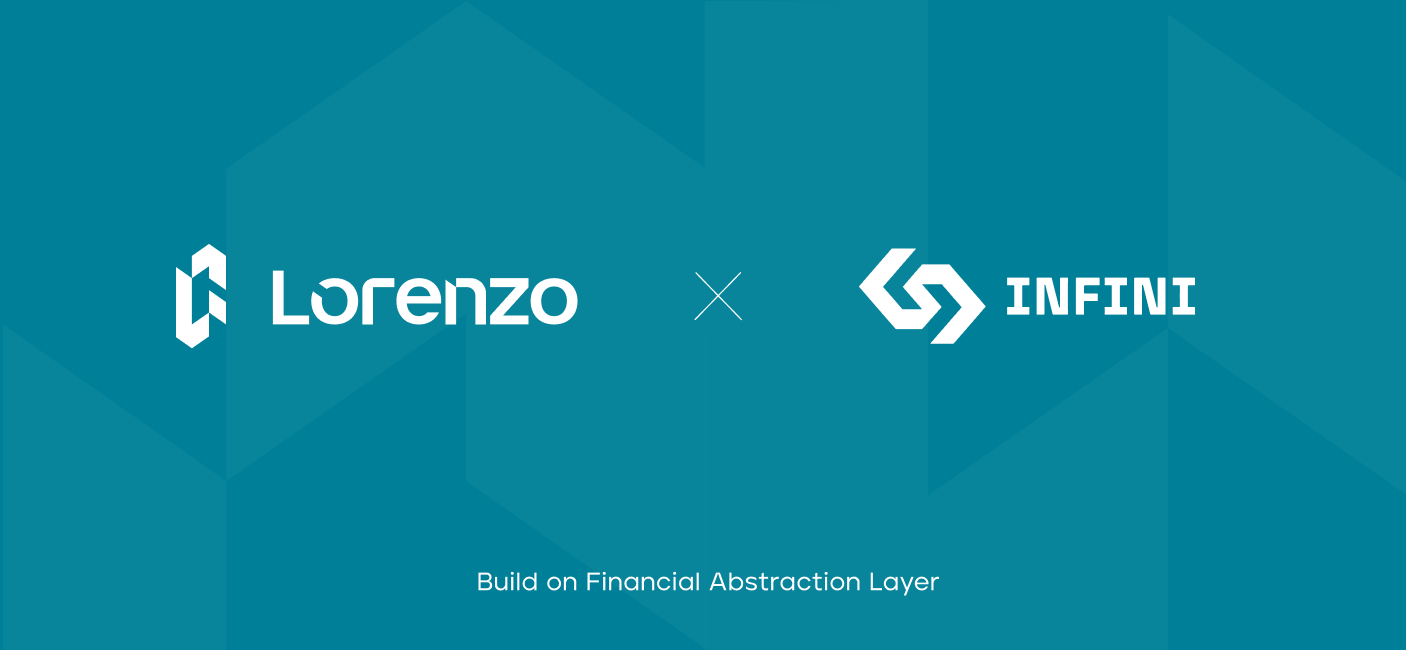
Furthermore, the previously popular DeFAI concept lacked reliable sources of yield strategies, which was one of the reasons for its failure to explode. Lorenzo provides multiple strategy combination Vaults, allowing DeFAI Agents to act as "portfolio managers," freely allocating strategy combinations and operating like hedge funds without the need to build their own strategies or execution infrastructure.
In fact, in addition to the aforementioned Plume and Infini, after announcing the brand narrative upgrade, several projects are in deep cooperation discussions with Lorenzo around the core narrative of the "Financial Abstraction Layer." In the future, as Lorenzo continues its ecological construction, more partners will be announced to join Lorenzo, co-creating a new type of on-chain financial infrastructure centered on real yields.
Web3 "BlackRock + Goldman Sachs": Aiming for a trillion-dollar asset scale
The brand upgrade is the first call to action for Lorenzo to build "an on-chain asset management platform that integrates CeFi and DeFi," and through the official roadmap, we can also see Lorenzo's clear planning and robust execution for achieving transformation, further creating a yield ecosystem truly driven by tokenized financial products.
In the second quarter of 2025, Lorenzo's core goal is to launch the Financial Abstraction Layer, to build infrastructure that provides users with a more intuitive and user-friendly financial service experience, breaking down the complex barriers of on-chain operations. At the same time, Lorenzo will launch its first flagship financial strategy product and engage in deep integration with early ecosystem partners to jointly build a more synergistic financial network.
By the third quarter, Lorenzo's focus will shift to the expansion of the ecosystem and diversification of business lines, providing users with richer choices. At the same time, Lorenzo will establish a public financial reporting system to transparently show users the platform's operational status, further enhancing user trust.
In the last quarter of 2025, Lorenzo's main focus will be on further expanding business scale, and launching the first BANK token repurchase plan.
With the implementation of multiple roadmaps, Lorenzo will gradually develop into a comprehensive financial platform that integrates asset management and investment banking services. Many community members have also likened Lorenzo's brand upgrade to the birth moment of the Web3 version of "BlackRock + Goldman Sachs."
This analogy comes, on one hand, from Lorenzo's elite team background, impressive financing performance, and the reputation accumulated from long-term deep cultivation in on-chain finance:
According to publicly available information on the official website, Lorenzo's core members not only come from prestigious universities but have also worked at well-known institutions such as Wall Street investment banks, ZetaChain, Magic Eden, and Xterio, possessing rich experience in cutting-edge technology fields such as finance, crypto, and AI applications.
In addition, Lorenzo is also a darling of capital: In May 2024, Lorenzo announced the completion of its seed round financing, attracting the attention of well-known institutions such as Yzi Labs, Gumi Cryptos, Portal Ventures, and Animoca Brands.
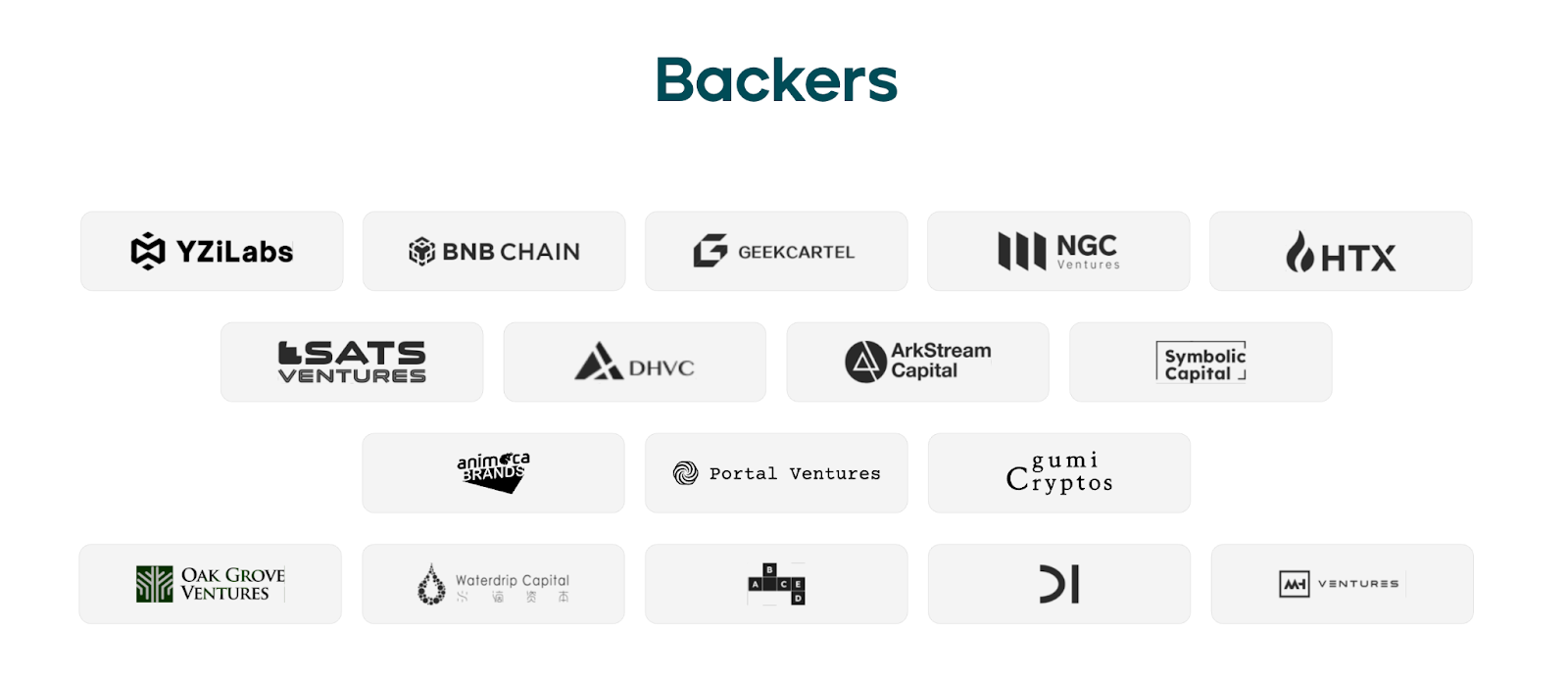
As the starting point for on-chain asset management business, Lorenzo, with its outstanding performance in the BTCFi track, currently provides yield services for over $600 million in Bitcoin, achieving accumulation in various aspects such as community, ecosystem, and users, and becoming a necessary reserve for its development into the Web3 version of "BlackRock + Goldman Sachs."
On the other hand, benchmarking against BlackRock's $11.48 trillion and Goldman Sachs' $3.2 trillion in asset management scale, many community members also hold higher expectations for Lorenzo's future growth: By building a new type of on-chain financial ecosystem centered on real yields through the universal abstraction layer, Lorenzo has achieved yield services that are more transparent, permissionless, intelligent, and composable than those of BlackRock and Goldman Sachs. At the same time, it has added the significant advantages of Web3 in value capture and yield distribution, forming a growth flywheel for ecological participants through $BANK token incentives.
As the U.S. takes the lead in crypto-friendly initiatives, with clear global regulatory trends in crypto finance and more institutions, users, and funds actively exploring crypto finance in 2025, can Lorenzo leverage yield products to build a bridge connecting CeFi and DeFi, truly matching the Web3 version of "BlackRock + Goldman Sachs," and become the "yield hub" for trillion-dollar on-chain assets?
With Lorenzo's brand upgrade, TGE, ecological construction, and the implementation of other milestones, we may be standing at a critical window for a paradigm shift in on-chain asset management.
免责声明:本文章仅代表作者个人观点,不代表本平台的立场和观点。本文章仅供信息分享,不构成对任何人的任何投资建议。用户与作者之间的任何争议,与本平台无关。如网页中刊载的文章或图片涉及侵权,请提供相关的权利证明和身份证明发送邮件到support@aicoin.com,本平台相关工作人员将会进行核查。




